On the Somerset coast, just south of the quirky Cotswolds courses like Cleeve Hill and Painswick and just north of the great Devon and Cornwall courses like Royal North Devon, Saunton, and St. Enodoc lies another course that is somewhat under the radar for most traveling golfers: Burnham and Berrow. Like the latter three, this is a true links course, lying on a relatively flat plane of sand dunes next to the sea. Unlike Saunton’s East course and more recently St. Enodoc, Burnham doesn’t seem to get a lot of support as being one of Britain’s top links courses. Now I haven’t played enough of Britain's top links courses to render a verdict but I can say that Burnham is an excellent course and one that, with a few tweaks and perhaps easier access through the neighboring town of Berrow, would make an excellent Open venue.
The club website gives an excellent history of all of the holes. The course has tone through an extensive series of changes since it was first expanded to 18 holes by Herbert Fowler in 1910 by architecture heavyweights including Harry Colt and Charles Alison. Apparently the Fowler version was very quirky with a lot of blind shots but Colt ‘modernized’ it in the early 20s, removing these and creating the basis of the more standard course that we experience today. Burnham is one of the least quirky links courses that I’ve played and I think that most American golfers would like it. As you can tell from some of my other reviews, I like a quirky layout and I wouldn’t be surprised if I would have liked the Fowler version more than the current Colt/Alison/Hawtree version. But it’s still an excellent course and one which everyone headed for St. Enodoc must play.
For my liking, Burnham has one of the best three hole opening stretches in southern England. The first is a 380 yard par 4 where the fairway is pinched by dunes at about 260 from the back tee. Anywhere short of this is fine (no point taking the risk and driving it through) but you must hit a straight drive or your approach will likely be blind over the dunes—especially if you miss right. The green is narrow but deep and angles gently from front right to back left.
The club website gives an excellent history of all of the holes. The course has tone through an extensive series of changes since it was first expanded to 18 holes by Herbert Fowler in 1910 by architecture heavyweights including Harry Colt and Charles Alison. Apparently the Fowler version was very quirky with a lot of blind shots but Colt ‘modernized’ it in the early 20s, removing these and creating the basis of the more standard course that we experience today. Burnham is one of the least quirky links courses that I’ve played and I think that most American golfers would like it. As you can tell from some of my other reviews, I like a quirky layout and I wouldn’t be surprised if I would have liked the Fowler version more than the current Colt/Alison/Hawtree version. But it’s still an excellent course and one which everyone headed for St. Enodoc must play.
For my liking, Burnham has one of the best three hole opening stretches in southern England. The first is a 380 yard par 4 where the fairway is pinched by dunes at about 260 from the back tee. Anywhere short of this is fine (no point taking the risk and driving it through) but you must hit a straight drive or your approach will likely be blind over the dunes—especially if you miss right. The green is narrow but deep and angles gently from front right to back left.
The 420 yard par 4 second plays to a rolling fairway lined by dunes on both sides with a dip on the right side about 255 yards from the middle tees. Like on the first hole, there’s no point in taking the risk to try to drive into the gap. If you can get it just short of this, you’ll have a simple approach to another deep but narrow green. This one is much more undulating than the first, perched up on a ledge (as Colt liked to do) and with a steep false front. This green has the proto-modern look that we find on a lot of Colt’s heathland courses like Swinley Forest and St. George’s Hill.
The 370 yard third was, along with the fifteenth, my favorite hole at Burnham. That’s because it features an excellent diagonal drive over bunkers and a blind punchbowl green that’s a bit quirkier than most here. Looking at the course’s website, I see that my fondness for this hole is not incidental—it’s one of the holes that wasn’t designed by Colt. It’s actually a remnant of the pre-Fowler nine hole course laid out in 1897 by Charles Gibson.
We’re back to Colt with the par 5 fourth, a hole that I think could use a bit of work—namely some bunkers. The hole features an interesting-looking diagonal drive over the dune ridge on the right but it’s less interesting than it seems at first; there’s ample room and no fairway bunkers. If I could only criticize one thing about Burnham, it’d be the lack of fairway bunkering. Most fairways just have one small bunker that’s easy to avoid. The approach to the green, sited between two dunes is attractive and a little easier from the right side of the fairway.
The par 3 fifth is very Colt featuring a plateau green below a dune on the left and deep bunkers front and right. With its narrow green that was very difficult to hit in what wasn’t even a particularly heavy wind, this hole with fit in nicely at the high temple of difficult par 3s, Rye.
Six is one of the holes that Fred Hawtree designed when he added the nine-hole Channel Course in the late 70s. It’s an awkward hole with the fairway narrowing to just a few yards at about 260. The green has a bunker on the left but lacks distinction.
The long par 4 seventh plays across flat land and isn’t one of the course’s better looking hole, but it is an interesting one. A creek runs up the right side of the fairway and there’s a perfectly placed bunker about 250 out in the left center of the fairway. You want to challenge this bunker (there’s room to its left) because the creek on the right turns into a pond at the front right of the green and it’s easier to avoid it from the left side. This shaping on this hole is noticeably more minimalist than on the previous holes and looking at the website, there’s a good explanation for this: it’s one of the remaining Fowler holes.
The long par 4 seventh plays across flat land and isn’t one of the course’s better looking hole, but it is an interesting one. A creek runs up the right side of the fairway and there’s a perfectly placed bunker about 250 out in the left center of the fairway. You want to challenge this bunker (there’s room to its left) because the creek on the right turns into a pond at the front right of the green and it’s easier to avoid it from the left side. This shaping on this hole is noticeably more minimalist than on the previous holes and looking at the website, there’s a good explanation for this: it’s one of the remaining Fowler holes.
The par 5 eighth, which if you’re playing the right-hand tees uses the aforementioned creek as a diagonal driving hazard up its right side, is another one of the best driving holes. This is likely the most difficult driving hole on the course because in addition to the creek, there are also three bunkers left of the fairway from 225-275 from the tips. Cutting the creek is obviously helpful because it shortens the approach but otherwise, there isn’t much of a reason to be on one side of the fairway or the other. The benched green seems like classic Colt but it was actually designed by Alison in the early 50s (maybe it’s also classic Alison. I don’t know, I haven’t played enough of this courses).
The par 3 ninth looks like and is Colt although apparently also with some input by MacKenzie. Like the fifth, the green is perched and very well defended, this time by six bunkers mostly at its front left and right. The green is also very undulating, with a lower front right portion and a higher back left.
While Colt got rid of most of the blind shots in his reworking of the course, the drive on ten is completely blind. But uncertainty aside, it isn’t a difficult driving hole because the fairway is wide and flat, with only one small fairway bunker on the right almost 300 yards from the tips. While I like blind shots to have forgiving landing areas, this drive perhaps crosses the line between ‘forgiving’ and ‘uninteresting.’ The approach to the green is no more distinguished.
The long par 4 eleventh may be the flattest hole on the course but was one of my favorites because of its well-placed left hand fairway bunker that guards the best angle to the well-bunkered, narrow-but-deep, and minimalist green. Not surprisingly, this is another Fowler hole.
The hole reminds me of Walton Heath. Despite flat land and hardly any shaping on or around the green, Fowler was able to use a few simple elements (in this case bunkers) to craft and simple, but interesting and challenging hole. We could also compare Burnham to the Old Course at Sunningdale as a course with more heavily shaped Colt hole and simpler Park Jr. (in this case Fowler) holes. I don’t think the balance here is as good as the Old because there isn’t as much of the simpler style of design and most of the original quirk in that design has been removed. The Colt holes also aren’t as distinctive.
The hole reminds me of Walton Heath. Despite flat land and hardly any shaping on or around the green, Fowler was able to use a few simple elements (in this case bunkers) to craft and simple, but interesting and challenging hole. We could also compare Burnham to the Old Course at Sunningdale as a course with more heavily shaped Colt hole and simpler Park Jr. (in this case Fowler) holes. I don’t think the balance here is as good as the Old because there isn’t as much of the simpler style of design and most of the original quirk in that design has been removed. The Colt holes also aren’t as distinctive.
The twelfth was a medium-long par 4 when I played it with a drive through a narrow opening in the dunes but the course website now lists it as a 200 yard par 3. I liked the version of the hole that I played because the drive was challenging yet bunkerless. Apparently the club has kept the green, which Hawtree did a nice job setting in the dunes just right of an old church. And the website notes that the original Hawtree hole was a par 3 so it looks like the current change is a move to restore that.
Thirteen is an interesting long par 5 (~570) which plays gently uphill and where the fairway starts wide but gets narrower the closer that you get to the green. The hole really starts to narrow about 150 out from the green and it’s one of the more demanding par 5 layup shots that I’ve seen. Again, the green is narrow and deep.
Another criticism that I have of Burnham is that while each of the par 3s is a good hole in its own right, they’re too similar to each other, with all of their greens perched on ledges and deeper than wide. I would have liked one green in a hollow or on a flat with minimal shaping, like on the Fowler holes. The fourteenth was a bit different from the other three when I played in that its green was bunkerless but with the conversion of twelve back to a par 3, that is not unique either.
I thought that the very long (~480) par 4 fifteenth was, with the third, one of the two best holes on the course. From the 450 yard tees that I played (I think), the fairway turns left at a mound about 250 yards out. If you leave it short of the mound, you’ll have a blind approach. But the further left you go, the more awkward the approach becomes because the green is narrow, deep, and has a big dune at its front left. It’s important to keep your ball as far right in the fairway as you can because it’s much easier to run the ball onto the green from the right side.
The green is easily the course’s best, lying simply on the ground with many interesting little ridges and bumps. I was a bit surprised to learn that the green was an 1897 original because there seems to be a lot of shaping on and around it. But the shaping is small scale, so it could have been done then. Or perhaps more likely, it could have evolved to what it is now.

The excellent fifteenth green. I was a little bit surprised by the website's claim that this is an original green because all of the edges appear to be shaped. But the shaping is also small scale, so it was certainly possible with 1897 technology. Or they could have just meant that it's an original greensite and there were little tweaks over the years.
Sixteen, which competes with the sixth for the title of Burnham’s least distinctive hole, is a short par 4 with a wide fairway and a two-tiered green at the base of the dunes. Seventeen is another par 3 where the green is elevated and difficult to hit.
The excellent long par 4 eighteenth hole is mostly Fowler with visual simplification of the approach by Alison. While you can see a lot of the fairway from the tee, it’s unclear what it does over the ridge. The fairway turns left and from the 450 yard back tees, it’s about 260 to go into the dune ridge through the fairway over the left edge of the visible fairway. Long hitters will either need to aim left or hit a draw. The approach is open and the green lays simply on the land, with the first tee immediately at its back for those who want to go around again.
I wasn’t aware of Burnham’s impressive architectural pedigree when I was playing the course. I remembered reading somewhere that the course used to be full of blind shots and that it had been ‘simplified’ over the years, but I didn’t realize that the simplifications had been carried out by no less than Colt and Alison. The current course is very strong and with a few back tees, would I think be an excellent venue for top-flight tournaments. It might be logistically difficult to host the Open Championship here because the entrance to the course is one narrow road in a densely populated suburb—but the 9-hole Channel Course would provide sufficient room for the ubiquitous corporate hospitality tents.
I came to Burnham and Berrow after having played Cleeve Hill, Pennard, and Painswick and I was missing some of their oddness here. For a course that was originally full of blind shots, there are hardly any now. It’s all pretty smoothed-out and regularized—one of the least quirky links courses that I played during my time in the UK. And while Colt’s work is always well thought-out and interesting, he had one of the heavier sets of hands of the early architects. As I’ve noted about some of his other courses, especially Sunningdale New, his work, with its shelved greens, mounding, and bunker patterns, can look quite modern. It lacks the simplicity and randomness of some of his contemporaries, like Braid and Fowler.
And I think that on this wild piece of links land, it would have been better to let the land dictate the features of the holes. There would have probably been a few weird/bad ones, but I suspect that there would have been a bit more originality in it. That’s not to say that the current course isn’t excellent—it is and I suspect that the majority would prefer the current course to what I’m envisioning. But I’d love to see the layout of the previous Fowler version of the course and wouldn’t be surprised if I would have preferred it to the current one.
I came to Burnham and Berrow after having played Cleeve Hill, Pennard, and Painswick and I was missing some of their oddness here. For a course that was originally full of blind shots, there are hardly any now. It’s all pretty smoothed-out and regularized—one of the least quirky links courses that I played during my time in the UK. And while Colt’s work is always well thought-out and interesting, he had one of the heavier sets of hands of the early architects. As I’ve noted about some of his other courses, especially Sunningdale New, his work, with its shelved greens, mounding, and bunker patterns, can look quite modern. It lacks the simplicity and randomness of some of his contemporaries, like Braid and Fowler.
And I think that on this wild piece of links land, it would have been better to let the land dictate the features of the holes. There would have probably been a few weird/bad ones, but I suspect that there would have been a bit more originality in it. That’s not to say that the current course isn’t excellent—it is and I suspect that the majority would prefer the current course to what I’m envisioning. But I’d love to see the layout of the previous Fowler version of the course and wouldn’t be surprised if I would have preferred it to the current one.
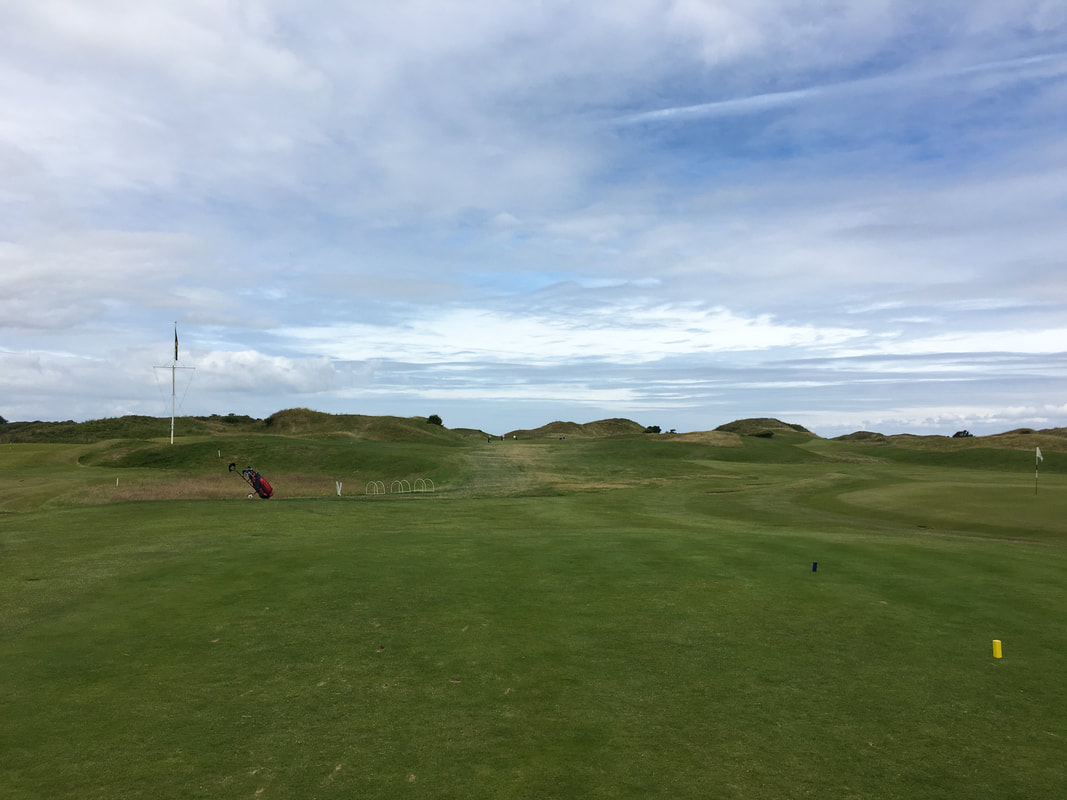
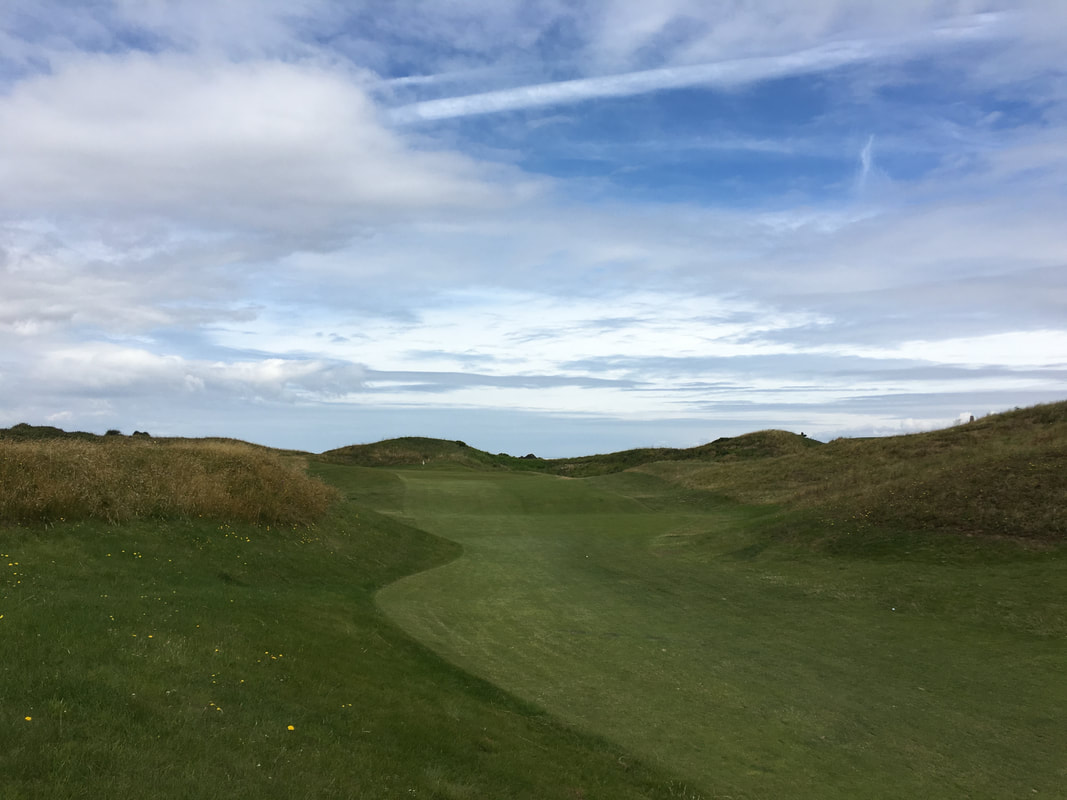
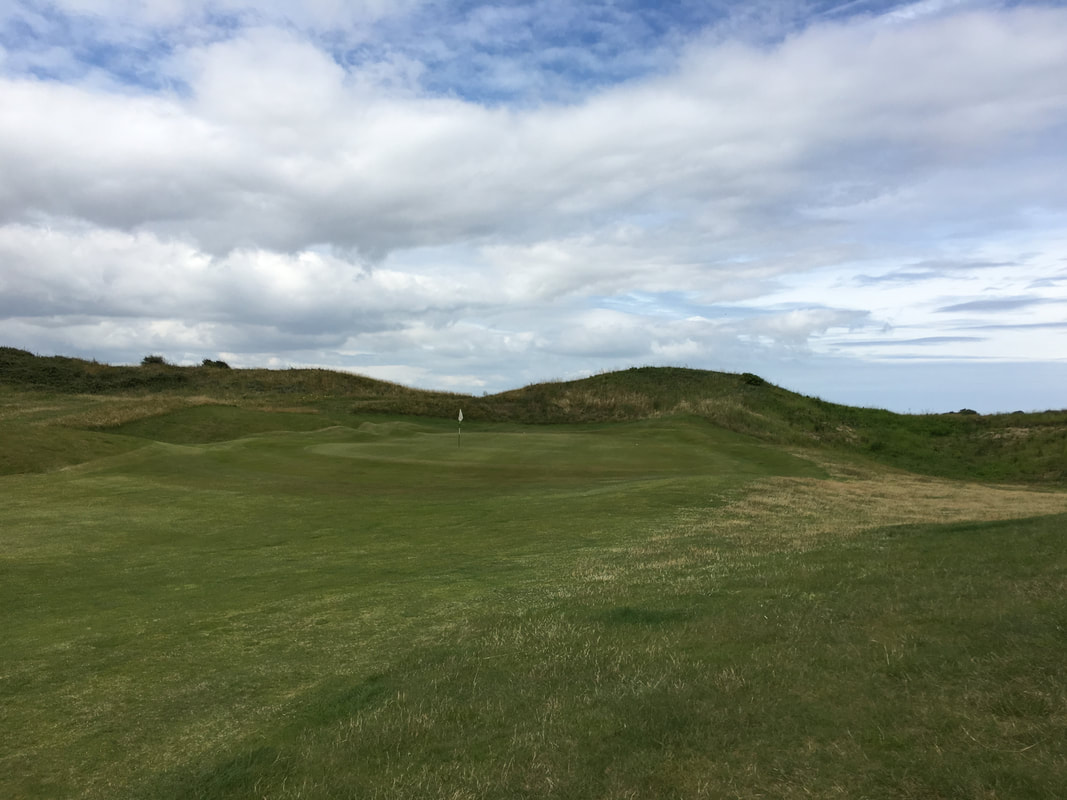







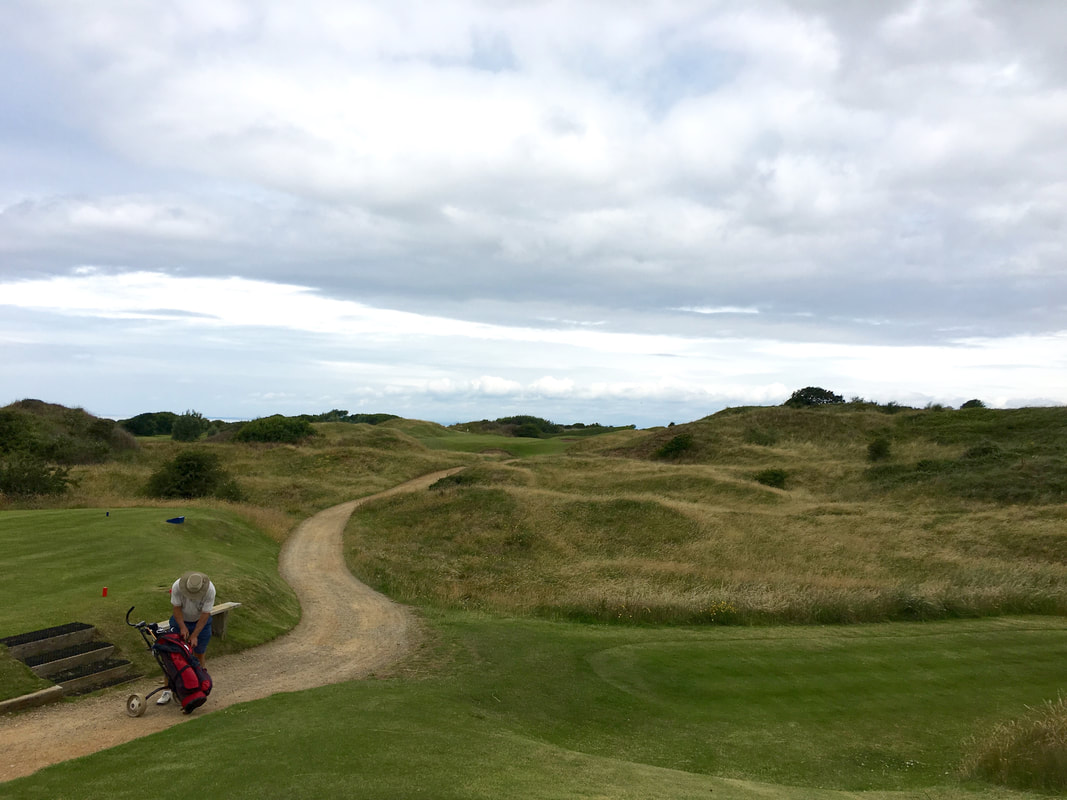







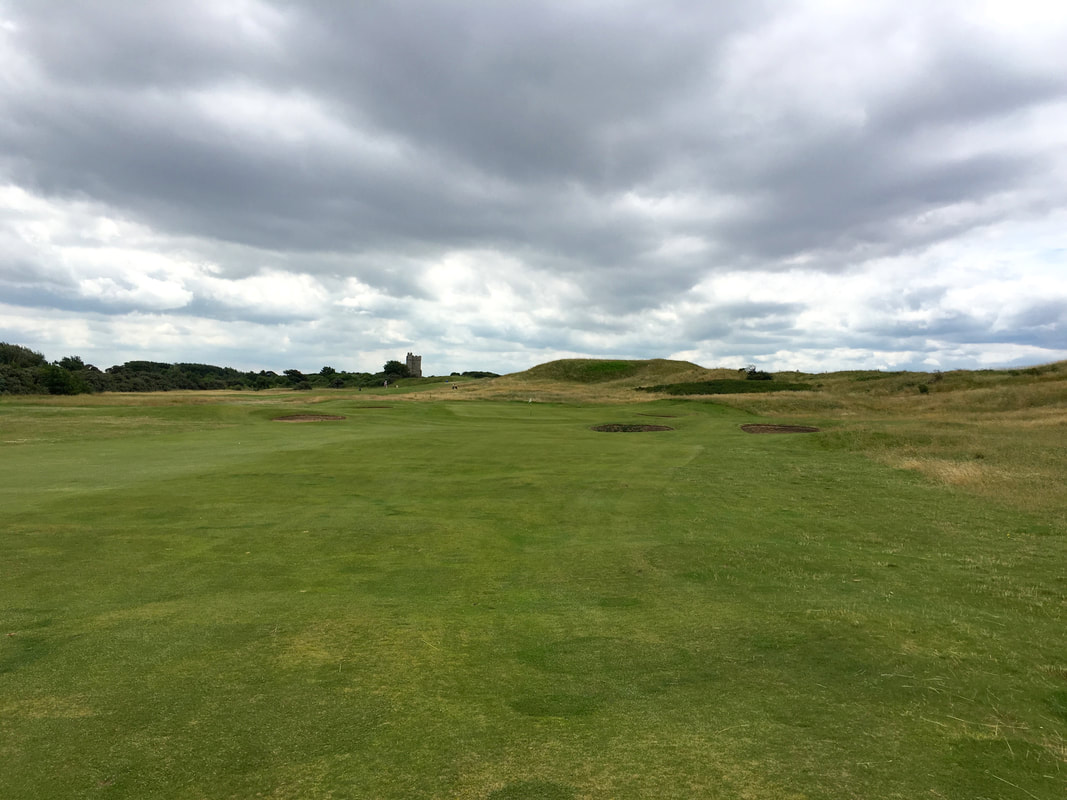







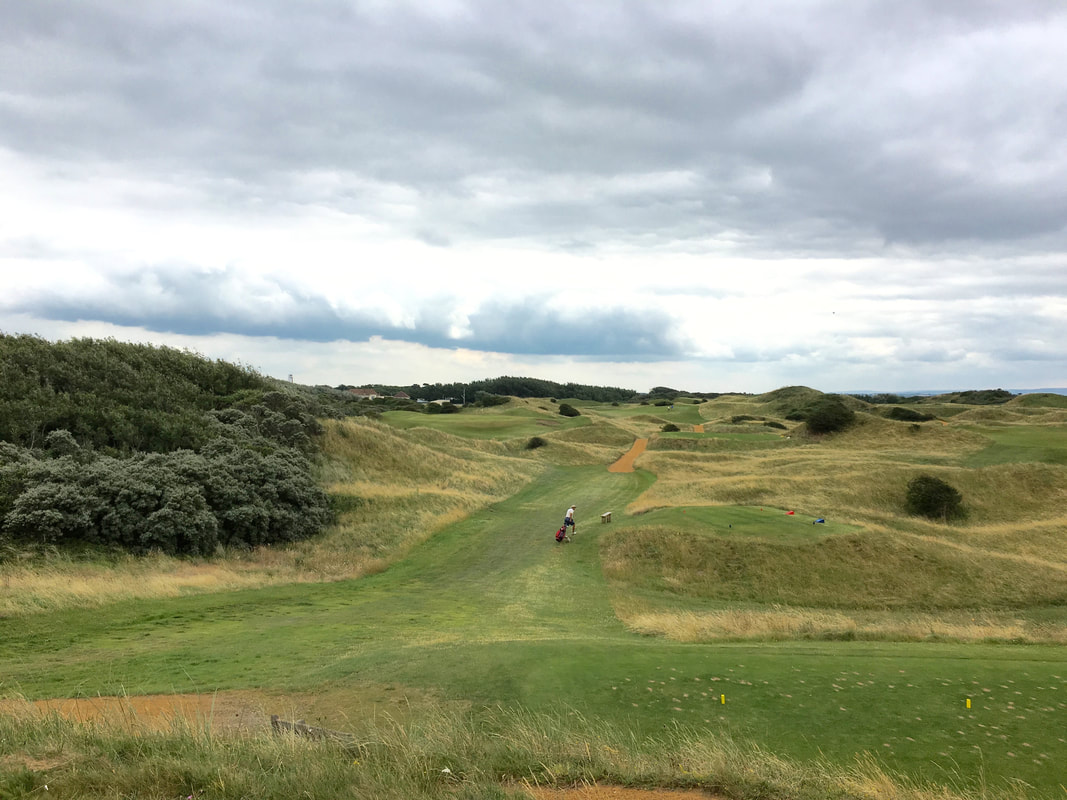


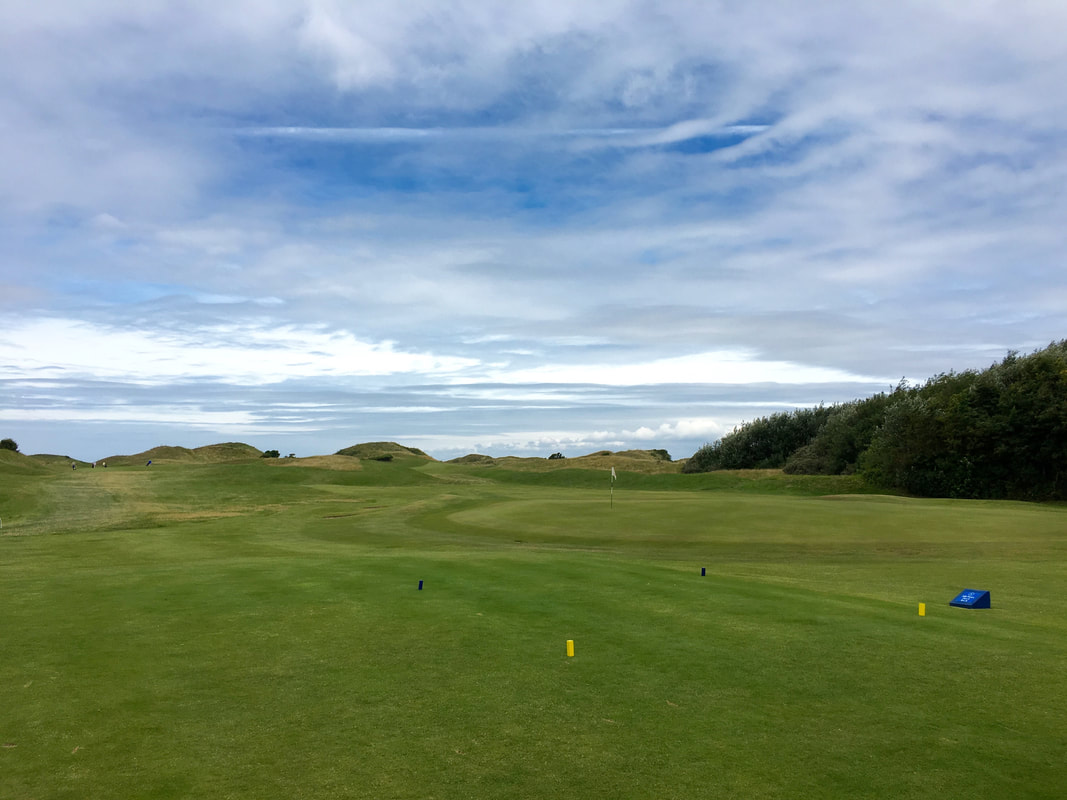
 RSS Feed
RSS Feed